Driving from Palm Desert south along Highway 111, the palm trees swaying lusciously in the breeze, spouting fountains announcing the newest gated community, the green of golf courses stretching practically to the horizon, you’d never know that you were in a desert. Except, of course, for the heat.
Like much of our relationship with water in California, our relationship to this southern desert is no exception in its strangeness. For almost a century, we have been fascinated by the desert’s possibilities- a climate where, if you can get water to it, fruits, vegetables, and dates grow all year long, a climate where you can live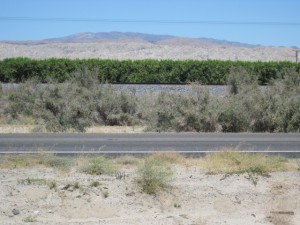 in eternal summer (except in the real summer when you live in the Eternal Oven.)
in eternal summer (except in the real summer when you live in the Eternal Oven.)
Thanks to water piped in from the Colorado River and water from deep below the surface of the desert, the desert is a fantasy resort town and agricultural hot-spot, flaunting fountains, ponds, and verdant greenery. But around the small habitable island of our creation, is still the desert. A constant reminder of the fragility of life in these parts, of the constant struggle for water.
Driving through the Palm Desert, I was struck by my tendency to think of water more often. To make sure I knew where I’d be able to get a drink next. As if the mirage around me, with its gas stations and
grocery stores, didn’t quite fool my body into trusting it. The dry heat bearing down, leaching my water away.
If you look at the native plants of the area, you understand that to survive in the desert, one has to be the Most water efficient. To take advantage of water when it comes, and to ration water as if you may never see it again.
We have changed all that. Outside of the resort town, the Coachella Valley stretched in front of us- lush, green agriculture sandwiched between parched rocky mountains and cracked tumble week desert.
As we approached the Salton Sea, rows of green crops stretched between the highway and the sea, bordered by dust and small canals of irrigation water. By the time we were cruising the sea’s eastern border, we had again entered what seemed to be barren desert with the occasional sign of human settlement, skeletons of old trailers and armchairs.
The Salton Sea’s story is a very interesting one, one that would not have unrolled as it did without the help of humans. The Sea used to be an area called the Salton Sink, a low-lying desert basin with a high amount of salt in its soil, which would occasionally fill with freshwater 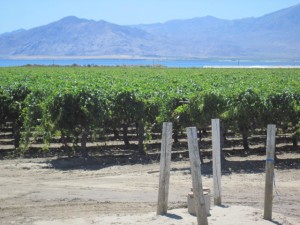 from the Colorado River and then evaporate again as part of a natural process over hundreds of thousands of years. In 1905, settlers in the West had begun to try to tame the Colorado River by building canals and dikes to divert water for agriculture. That year, after heavy rain and snowmelt, the river breached the Alamo Canal and other dikes, creating two new rivers, and pouring all of itself into the Salton Sink, creating the Salton Sea within two years.
from the Colorado River and then evaporate again as part of a natural process over hundreds of thousands of years. In 1905, settlers in the West had begun to try to tame the Colorado River by building canals and dikes to divert water for agriculture. That year, after heavy rain and snowmelt, the river breached the Alamo Canal and other dikes, creating two new rivers, and pouring all of itself into the Salton Sink, creating the Salton Sea within two years.
Now 376 square miles, its salinity higher than the ocean’s, the sea is fed only by agricultural run-off water. In a strange twist of fate, with the development on the Southern California coast displacing thousands of migrating birds, the Sea has become a bird sanctuary. Though with rising salinity levels as a result of not enough water 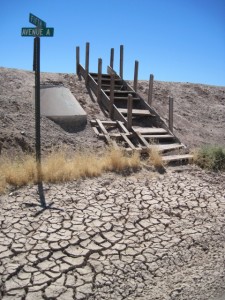 coming into the sea to replace water evaporated, birds might not be able to use the Sea as a resting place for many more years. If you want to learn more about the effort to preserve the Salton Sea as a place for bird migration, read here.
coming into the sea to replace water evaporated, birds might not be able to use the Sea as a resting place for many more years. If you want to learn more about the effort to preserve the Salton Sea as a place for bird migration, read here.
In terms of human development, since its creation in 1905, the Sea has gone through a few waves of developers trying to market it as a resort spot, hence the remaining trailer parks and more often, the wreckage of past habitation. Funnily enough, my grandpa mistakenly bought two lots at the side of the Sea during one of the resort booms. Unfortunately for him, the Sea has never retained a large population, and he had to sell his lots.
Our favorite thing
My favorite moment of the drive down the Salton Sea was stepping out of the truck to take a few pictures of an abandoned café, when my mom and I noticed thousands of little plants at our feet. It is easy for us humans to think, when we take a quick look at the desert, that it is empty. But at our feet, were thousands of plants, mostly two to four inches high- some flowering, some succulents, many with different colors- green, red, yellow. These are the plants that call the desert 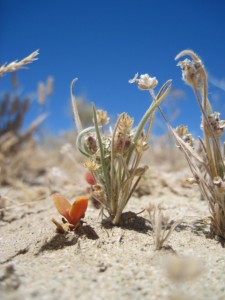 home.
home.
Moving forward it would be wise to acknowledge the beauty of the desert and learn from its native inhabitants how to adapt to a given climate. To stop and look for a second more, using human know-how and technology to work with nature, rather than try to dominate it, to understand and learn, rather than continue our knee-jerk altering without seeing the desert’s many gifts to us.

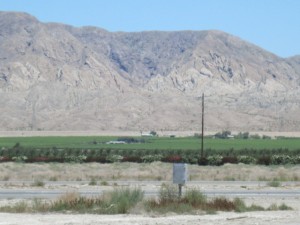
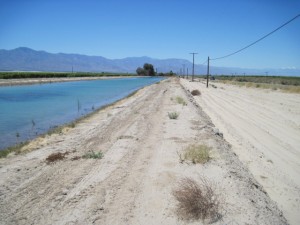
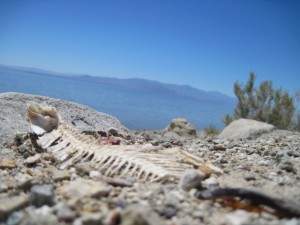
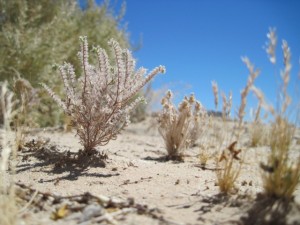
I wish the dune buggiers would acknowledge the beauty of the desert, realizing that beneath what they consider to be only sand, there’s a world like the one you and your mom experienced: “thousands of little plants at our feet.” And animals and insects. “The desert’s many gifts to us.”
Thanks for your expressions of appreciation for the kind of land I stem from, being a child of the Sonoran Desert.
If I had a dollar for every time I came to http://www.sweetwaterproject.org... Amazing read!
Super interesting read! Honest!
Super awesome writing. Really!
Wow I’m honestly the first comment to your amazing writing.
You have done it once again. Amazing post!